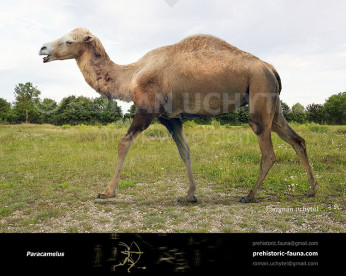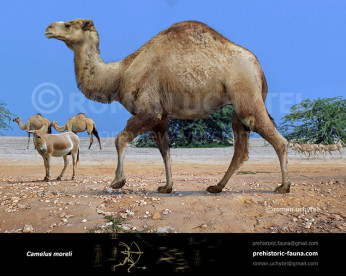Camelus knoblochi (largest Eurasian camel)
262262Camelus knoblochi (Camelus knoblochi (Poliakov,1880))
Order: Artiodactyla
Family: Camelidae
Time period: the Middle - Late Pleistocene of Eurasia
Size: 3,5 m in length, 250 cm in height, 700 - 1,200 kg of weight
Typical representative: Camelus knoblochi
Camelus knoblochi was the largest Eurasian camel. Its stratigraphical range includes most of the Middle Pleistocene and Late Pleistocene. This species had its maximum distribution and highest abundance in the Late Middle Pleistocene, when its range extended from Eastern Europe to Transbaikalia. In the Late Pleistocene, C. knoblochi inhabited a considerable part of Asia from 391 to 541 N between the Urals and northeastern China. Palynological data and paleozoological contexts indicate steppe and forest–steppe environments of the species. Most likely, C. knoblochi fed mainly on grassy vegetation. However, its diet also included sprigs and leaves. Their extinction was caused by climatic aridization during the Late Pleistocene accompanied by the drastic change of plant communities. In this climatic situation, camels were displaced to relatively extreme conditions of dry steppe and semi-deserts because of high competition with more efficient phyllophagous and herbivorous animals such as large deer and ruminants. Large C. knoblochi became extinct, being replaced by C. bactrianus, which is better adapted to severe environments and to feeding on less nutritious vegetation.
Vadim V. Titov
Camelus knoblochi (Camelus knoblochi (Poliakov,1880))
Order: Artiodactyla
Family: Camelidae
Time period: the Middle - Late Pleistocene of Eurasia
Size: 3,5 m in length, 250 cm in height, 700 - 1,200 kg of weight
Typical representative: Camelus knoblochi
Camelus knoblochi was the largest Eurasian camel. Its stratigraphical range includes most of the Middle Pleistocene and Late Pleistocene. This species had its maximum distribution and highest abundance in the Late Middle Pleistocene, when its range extended from Eastern Europe to Transbaikalia. In the Late Pleistocene, C. knoblochi inhabited a considerable part of Asia from 391 to 541 N between the Urals and northeastern China. Palynological data and paleozoological contexts indicate steppe and forest–steppe environments of the species. Most likely, C. knoblochi fed mainly on grassy vegetation. However, its diet also included sprigs and leaves. Their extinction was caused by climatic aridization during the Late Pleistocene accompanied by the drastic change of plant communities. In this climatic situation, camels were displaced to relatively extreme conditions of dry steppe and semi-deserts because of high competition with more efficient phyllophagous and herbivorous animals such as large deer and ruminants. Large C. knoblochi became extinct, being replaced by C. bactrianus, which is better adapted to severe environments and to feeding on less nutritious vegetation.
Vadim V. Titov

-797x638.jpg)
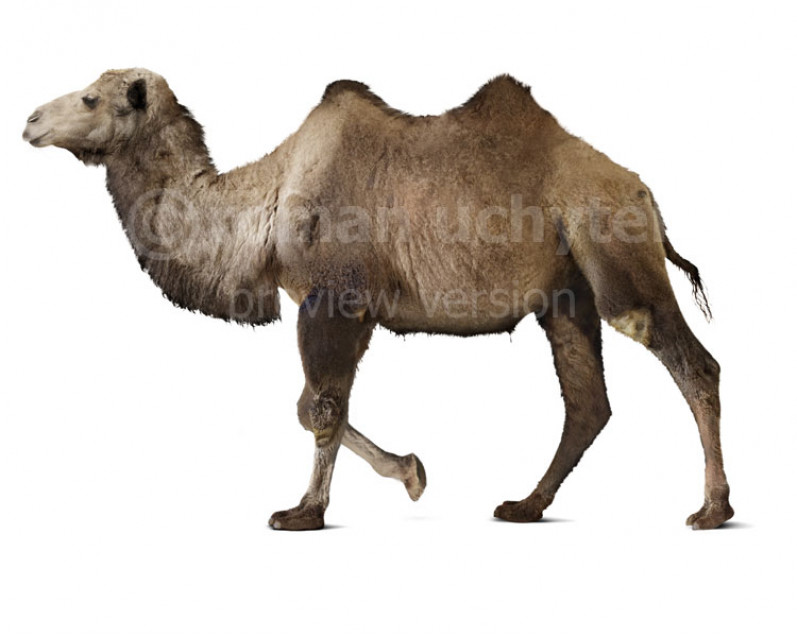
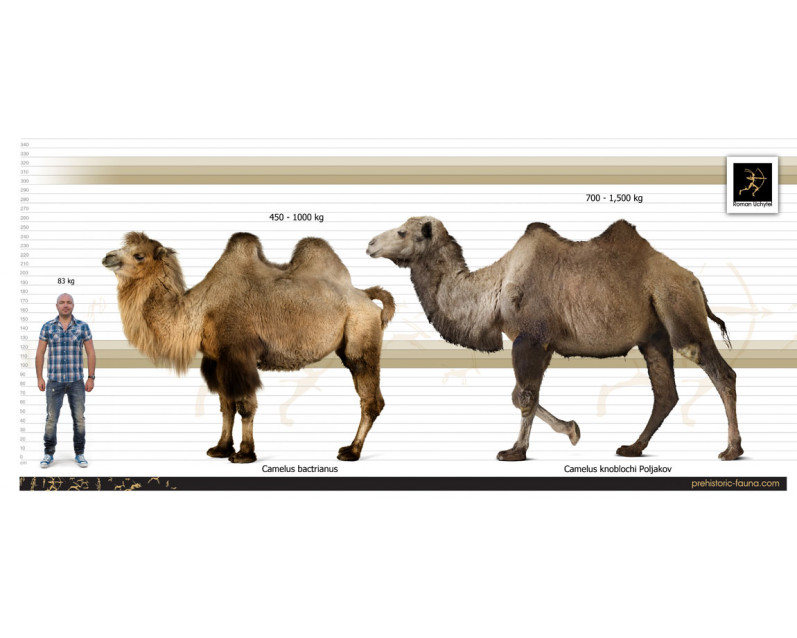
-70x56.jpg)


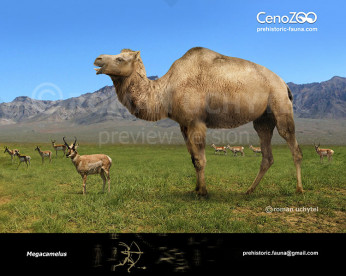
-346x277.jpg)
